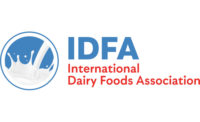Dairy farmers are facing economic crisis, says NMPF
Dairy farmers across the country are facing “an unprecedented financial catastrophe,” and Congress needs to work with the U.S. Department of Agriculture to work on measures to help farmers survive the situation, according to the National Milk Producers Federation, which testified at a hearing in the House of Representatives intended to examine the causes of, and possible solutions to, the economic crisis in dairy.
Tom Wakefield, a dairy farmer from Bedford, Pa., and a board member of NMPF, told the House Subcommittee on Livestock and Dairy that the sudden loss of export markets, due largely to the global economic crisis, has plunged farmers into financial crisis, as their prices have dropped along with lost export markets.
“Because the U.S. market had gradually increased production to respond to the international market signals being sent in recent years that indicated higher demand for U.S. dairy products,
U.S. producers found the rug pulled out from under them,” Wakefield said, especially when those export markets largely evaporated last fall.
He told the congressional panel that the pricing crisis is not due to a sudden surge in imports, which are actually down overall from recent years as a percentage of the total market. While
NMPF continues to support the creation of tariff rate quotas for products such as milk protein concentrates and casein, “imports are not the cause of the problem we are facing,” Wakefield said.
Wakefield also discussed potential responses to the situation, reiterating NMPF’s request last month that USDA temporarily raise the purchase price levels for cheese and non-fat dry milk to return higher prices to farmers.
In a letter sent June 26 to Agriculture Secretary Tom Vilsack, NMPF requested that the USDA raise the purchase price for cheese blocks from $1.13/lb. to $1.19; raise the purchase price for barrel cheese from $1.10 to $1.16/lb.; and raise the purchase price for non-fat dry milk powder from $0.80/lb. to $0.84.
Wakefield also asked that Congress work with the USDA to fully utilize the Dairy Export
Incentive Program in the coming months, which can help export additional quantities of milk powder, cheese and butter.
“We are appreciative of the step USDA took early last week to announce the full allocations for the current DEIP year and hope to see the critical next step of opening the bidding process to use the entire amount of the allocations soon thereafter,” Wakefield said.
Wakefield also discussed measures that dairy farmers themselves are taking to address their plight, such as aggressively using the Cooperatives Working Together program to remove more than 100,000 cows from the national dairy herd this spring, and then initiating yet another herd retirement effort just in the past week.
“Dairy producers have spent $115 million of their own hard-earned money this year on our most recent herd retirement program, the largest one in CWT’s history, and are prepared to spend up to $160 million more in subsequent rounds of our program in the near future,” he said.
He also pointed out that NMPF has created a Strategic Planning Task Force to analyze and develop a long-term strategic plan to positively impact the various factors influencing both supply and demand for milk and dairy products.
“Through a round of listening sessions, the Task Force will bring in organized producer groups representing different segments and constituencies all across the country to obtain widespread input and access to the best ideas,” Wakefield said. “We believe this is the best way to get input from the producer community in order to develop a plan for the future which can be embraced across the many dairy-producing regions of America.”
Wakefield told the House panel that the results of the planning process will be shared with
Congress “to help ensure that we do not find ourselves back in a similar situation any time soon.”
Tom Wakefield, a dairy farmer from Bedford, Pa., and a board member of NMPF, told the House Subcommittee on Livestock and Dairy that the sudden loss of export markets, due largely to the global economic crisis, has plunged farmers into financial crisis, as their prices have dropped along with lost export markets.
“Because the U.S. market had gradually increased production to respond to the international market signals being sent in recent years that indicated higher demand for U.S. dairy products,
U.S. producers found the rug pulled out from under them,” Wakefield said, especially when those export markets largely evaporated last fall.
He told the congressional panel that the pricing crisis is not due to a sudden surge in imports, which are actually down overall from recent years as a percentage of the total market. While
NMPF continues to support the creation of tariff rate quotas for products such as milk protein concentrates and casein, “imports are not the cause of the problem we are facing,” Wakefield said.
Wakefield also discussed potential responses to the situation, reiterating NMPF’s request last month that USDA temporarily raise the purchase price levels for cheese and non-fat dry milk to return higher prices to farmers.
In a letter sent June 26 to Agriculture Secretary Tom Vilsack, NMPF requested that the USDA raise the purchase price for cheese blocks from $1.13/lb. to $1.19; raise the purchase price for barrel cheese from $1.10 to $1.16/lb.; and raise the purchase price for non-fat dry milk powder from $0.80/lb. to $0.84.
Wakefield also asked that Congress work with the USDA to fully utilize the Dairy Export
Incentive Program in the coming months, which can help export additional quantities of milk powder, cheese and butter.
“We are appreciative of the step USDA took early last week to announce the full allocations for the current DEIP year and hope to see the critical next step of opening the bidding process to use the entire amount of the allocations soon thereafter,” Wakefield said.
Wakefield also discussed measures that dairy farmers themselves are taking to address their plight, such as aggressively using the Cooperatives Working Together program to remove more than 100,000 cows from the national dairy herd this spring, and then initiating yet another herd retirement effort just in the past week.
“Dairy producers have spent $115 million of their own hard-earned money this year on our most recent herd retirement program, the largest one in CWT’s history, and are prepared to spend up to $160 million more in subsequent rounds of our program in the near future,” he said.
He also pointed out that NMPF has created a Strategic Planning Task Force to analyze and develop a long-term strategic plan to positively impact the various factors influencing both supply and demand for milk and dairy products.
“Through a round of listening sessions, the Task Force will bring in organized producer groups representing different segments and constituencies all across the country to obtain widespread input and access to the best ideas,” Wakefield said. “We believe this is the best way to get input from the producer community in order to develop a plan for the future which can be embraced across the many dairy-producing regions of America.”
Wakefield told the House panel that the results of the planning process will be shared with
Congress “to help ensure that we do not find ourselves back in a similar situation any time soon.”
Looking for a reprint of this article?
From high-res PDFs to custom plaques, order your copy today!





